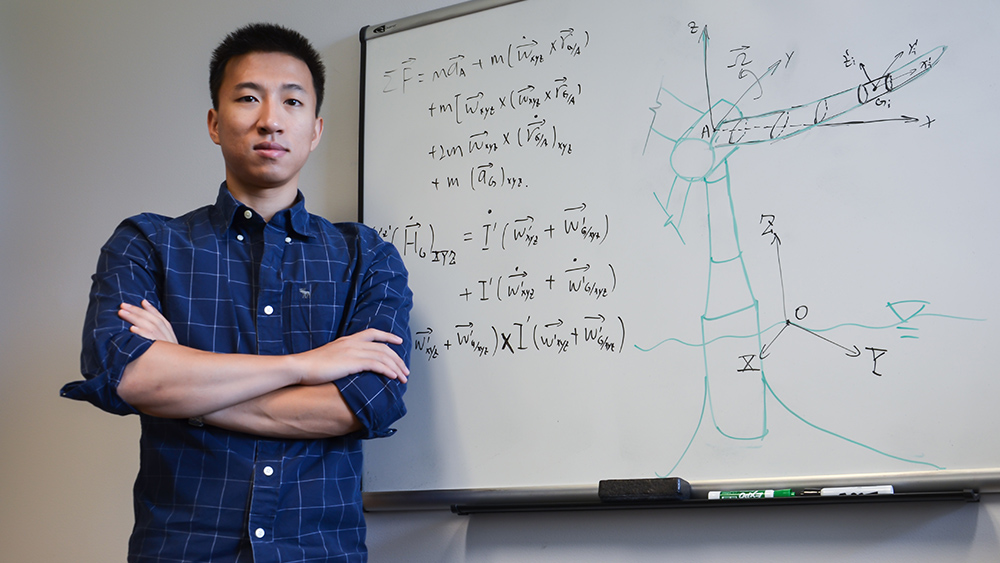
Offshore wind turbines are large floating devices placed in deep waters supported by a platform to convert wind energy into electric power. These turbines are an emerging technology that
"The blades of a floating offshore wind turbine are slender and flexible structures that not only rotate with the turbine, but also move with the supporting tower on a floating platform,” Tang said. “The irregular winds and waves apply forces to the whole structure simultaneously and induce both blade vibrations and platform motions; therefore, the dynamic behaviors of these blades are extremely complicated.”

Tang has developed a new beam theory that he uses to compute and analyze the blade vibrations of floating offshore wind turbines.
“We developed a computer program package that can compute the complete floating wind turbine system, including solving the complex system of equations for blades,” Tang said. “These theoretical and numerical developments allow us to build better floating offshore wind turbines.”
The world’s first commercial floating wind farm is currently under construction 25 kilometers off the coast of Scotland in the North Sea, including six 5-megawatt turbines, which can power around 20,000 households without carbon emission.
Tang decided to redirect his career after working for almost two years as an inspection engineer in a petrochemical plant in Saudi Arabia. The challenges and unknowns of the ocean drew his interest and led him into the doctoral program in ocean engineering. Originally from China, he has two bachelor’s degrees (in civil engineering, and theoretical and applied mechanics) from China and a master’s degree in mechanical engineering from Saudi Arabia.
“My biggest obstacle so far has been developing an obscure theory in my doctoral studies,” Tang said. “My advice for those thinking about pursuing a degree in ocean engineering is to remember that the ocean is such a vast, underdeveloped territory. Similarly, ocean engineering includes so many interesting topics, so do not lose yourself in the vast ocean. Find your interests and know your direction.”